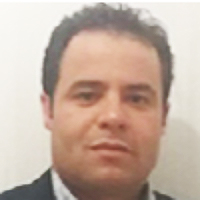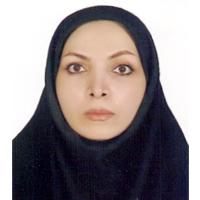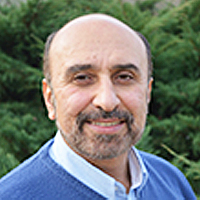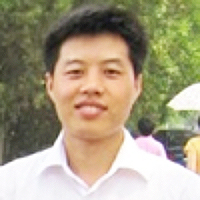Abstract
Research Article
Feasibility study on the evaluation of the effect of narrow-band CE-Chirp ASSR in the hearing field after hearing aid in hearing-impaired children
Wang Yonghua* and Xing Shuoyao
Published: 12 July, 2019 | Volume 3 - Issue 1 | Pages: 007-011
Objective Study: Whether the narrow-band CE-Chirp ASSR test in the sound field is an objective evaluation method for the hearing aid compensation effect, and whether there is a difference in children with different hearing loss levels.
Methods: 39 children (67 ears) wearing full digital hearing aids with good rehabilitation effect and ability to cooperate with behavioral audiometry were selected. The narrow-band CE-Chirp ASSR test group in the sound field was set as the experimental group, and the sound field behavioral audiometry after hearing aid was set as the control group. According to the degree of hearing loss, it was divided into moderate hearing loss group, severe hearing loss group and extremely severe hearing loss group. The difference between test results of experimental group and control group was compared.
Results: There were no significant differences between the experimental group and the control group in the moderate hearing loss group and the extremely severe hearing loss group at 0.5, 1, 2, and 4kHz (P > 0.05). The results of the experimental group and the control group in the severe hearing loss group, There was no significant difference at 0.5, 1, 2kHz (P > 0.05), there was a significant difference at 4kHz (P < 0.05), and the mean difference was - 6.4dB HL. When the degree of hearing loss was not grouped, there was no significant difference between the experimental group and the control group at 0.5, 1, 2kHz (P > 0.05), 4kHz was significantly different (P < 0.05), and the mean difference was -3.2dB HL.
Conclusion: It is clinically feasible to evaluate the hearing aid compensation effect of the narrow-band CE-Chirp ASSR in the hearing-impaired children. The grouping according to the degree of hearing loss can be more accurate in evaluating the hearing aid compensation effect. The narrow-band CE-Chirp in the sound field of children with moderate and very severe hearing loss ASSR results can be directly used to assess the hearing aid compensation effect, while children with severe hearing loss need to apply correction values at 4kHz.
Read Full Article HTML DOI: 10.29328/journal.ated.1001007 Cite this Article Read Full Article PDF
References
- Jianhua Z, Xiaobing L, Lin L. A Comparison of Aided Hearing Thresholds by Behavioral Audiometry and Auditory Steady-state Response in Sound Field. Chinese Scientific Journal of Hearing and Speech Rehabilitation. 2011; 6: 26-29.
- Tingting F. Relevant Problems about the application of ASSR in the auditory diagnosis. Medical Equipment. 2012; 25: 22-24.
- Sha L, Ruijuan D. Behavioral Audiometry in Children. Journal of Audiology and Speech Pathology. 2017; 25: 219-220.
- Jinxiao Z, Ling L, Wendi S. Correlative analysis of octave band CE-Chirp ABR and behavioral auditory in children with hearing loss. Chinese Archives of Otolaryngology-Head and Neck Surgery. 2018; 25: 83-85.
- Sturzebecher E, Cebulla M, Elberling C, Berger T. New efficient stimuli for evoking frequency specific auditory steady-state responses. J Am Acad Audiol. 2006; 17: 448. PubMed: https://www.ncbi.nlm.nih.gov/pubmed/16866006
- Xiaoya W, Renzhong L, Jun L, Wen RJ, Zou Y, et al. Correlation between chirp auditory brainstem response and behavioral hearing threshold in children. Chinese Journal of Otorhinolaryngology Head and Neck Surgery. 2009; 3: 190-191. PubMed: https://www.ncbi.nlm.nih.gov/pubmed/19558855
- Elberling C. Don M. Cebulla M, Stürzebecher E. Audirtory steady-state responses to chirp stimuli based on cochlear traveling wave delay. J Acoust Soc Am. 2007; 122: 2772-2785. PubMed: https://www.ncbi.nlm.nih.gov/pubmed/18189568
- Wenting L, Jiangshun S, Jinghua X. Correlation between Evoked Auditory Steady State Response(ASSRs) and Pure Tone Audiometry(PTA) in Children. Chinese Journal of Otology. 2016; 14: 191-194.
- Shi Wei, Guo Wei, Wang Qiuju. NB CE-Chirp ASSR Application in Infant Hearing Screening and Diagnosis. Journal of Audiology and Speech Pathology. 2011; 19: 7-10.
- Qiming L, Jinming Z, Lizi Q. Analysis of the correlation between CE-Chirp ASSR and the behavioral hearing thresholds. The Journal of Practical Medicine. 2012; 28: 2522-2555.
- Fanqin W, Zhaoqun L, Guanping Z. Correlation between Frequency-Specific Chirp Auditory Steady-State Responses and Pure Tone Audiometry in Adults. Chinese Journal of Otology. 2012; 10: 451-454.
- Fanqin W, Guanping Z, Zhaoqun L. Correlation between Frequency-Specific Chirp Auditory Steady-State Responses and Pure Tone Audiometry in Children. Chinese Journal of Otology. 2014; 12: 235-238.
- Yuan L, Xiaohuan B, Yi S. Narrow Band CE-Chirp ASSRs and Conventional ASSRs in Children with Profound Hearing Loss. Chinese Journal of Otology. 2018; 16: 340-343.
- Cebulla M, Sturzebecher E, Elberling C. Objective detection of auditory steady-state responses: comparison of one-sample and q-sample tests. J Am Acad Audiol, 2006; 17: 93-96. PubMed: https://www.ncbi.nlm.nih.gov/pubmed/16640063
- Picton TW, John MS, Dimitrijevic A. Human auditory steady-stated responses. Int Journal Audiol. 2003; 42: 177.
- Xingqi L, Qiuju W. Fundamental and Application of Auditory Evoked Response. Beijing: People's Military Medical Publisher. 2015; 211-217.
- Daofeng N. American Academy of Audiology Clinical Practice Guidelines: Pediatric Amplification. Chinese Scientific Journal of Hearing and Speech Rehabilitation. 2014; 12: 170-173.
- Chuling L, Shujuan T, Xianglin L. Relationship between Evoked Auditory Steady-state Responses and Pure Tone Audiometry in Children with Different Levels of Hearing Loss. Journal of Audiology and Speech Pathology. 2017; 25: 591-593.
- Wenbo J, Weiqing X. Test on Auditory Steady-state Responses of Normal-hearing Adults. Anhui Medical and Pharmaceutical Journal. 2010; 14: 668-670.
Figures:

Figure 1
Similar Articles
-
A possible Etiology and new treatment of Burning Mouth Syndrome and allied conditionSudhakar Pattanaik*. A possible Etiology and new treatment of Burning Mouth Syndrome and allied condition. . 2017 doi: 10.29328/journal.ated.1001001; 1: 001-005
-
Changes in the frequency and intensity of Tinnitus using the Suppressive Noise SpectrumMing Zhang*,Alysia Jeske,Sarah Young. Changes in the frequency and intensity of Tinnitus using the Suppressive Noise Spectrum. . 2017 doi: 10.29328/journal.ated.1001002; 1: 006-012
-
Practical implementation of the SWEEP-session of Stimulation-Registration in CI fittingPetrov SM*. Practical implementation of the SWEEP-session of Stimulation-Registration in CI fitting. . 2017 doi: 10.29328/journal.ated.1001003; 1: 013-015
-
For professionals working on the topic of cochlear implantation: Opinions of readers of “Instruction” and participants of MIMICPetrov SM*. For professionals working on the topic of cochlear implantation: Opinions of readers of “Instruction” and participants of MIMIC. . 2018 doi: 10.29328/journal.ated.1001004; 2: 001-005
-
Recent advances in pathophysiology and management of subglottic HemangiomaMohamed Khamis Tolba Mahmoud Abdalla*. Recent advances in pathophysiology and management of subglottic Hemangioma. . 2018 doi: 10.29328/journal.ated.1001005; 2: 006-007
-
Topical Management of chronic rhinosinusitis - A literature reviewAremu Shuaib Kayode*,Tesleem Olayinka Orewole. Topical Management of chronic rhinosinusitis - A literature review. . 2019 doi: 10.29328/journal.ated.1001006; 3: 001-006
-
Feasibility study on the evaluation of the effect of narrow-band CE-Chirp ASSR in the hearing field after hearing aid in hearing-impaired childrenWang Yonghua*,Xing Shuoyao. Feasibility study on the evaluation of the effect of narrow-band CE-Chirp ASSR in the hearing field after hearing aid in hearing-impaired children. . 2019 doi: 10.29328/journal.ated.1001007; 3: 007-011
-
Prevalence of disabling hearing loss in the elderlyLetícia Raquel Baraky Vasconcelos,Paula Ferraz Rodrigues,Paula Liziero Tavares,Audryo Oliveira Nogueira*. Prevalence of disabling hearing loss in the elderly. . 2019 doi: 10.29328/journal.ated.1001008; 3: 012-013
-
Impact of Community Oriented Ear Care (COEC) on national programme for control of deafness in India: A critical lookSanjeev Davey*,Anuradha Davey,Rajesh Jain. Impact of Community Oriented Ear Care (COEC) on national programme for control of deafness in India: A critical look. . 2020 doi: 10.29328/journal.ated.1001009; 4: 001-002
-
Audit of the effect of non-nasal specific scoring on the Postoperative SNOT22 questionnaireSamir Gendy*. Audit of the effect of non-nasal specific scoring on the Postoperative SNOT22 questionnaire. . 2020 doi: 10.29328/journal.ated.1001010; 4: 003-005
Recently Viewed
-
Prediction of neonatal and maternal index based on development and population indicators: a global ecological studySedigheh Abdollahpour,Hamid Heidarian Miri,Talat Khadivzadeh*. Prediction of neonatal and maternal index based on development and population indicators: a global ecological study. Clin J Obstet Gynecol. 2021: doi: 10.29328/journal.cjog.1001096; 4: 101-105
-
A Genetic study in assisted reproduction and the risk of congenital anomaliesKaparelioti Chrysoula,Koniari Eleni*,Efthymiou Vasiliki,Loutradis Dimitrios,Chrousos George,Fryssira Eleni. A Genetic study in assisted reproduction and the risk of congenital anomalies. Clin J Obstet Gynecol. 2021: doi: 10.29328/journal.cjog.1001095; 4: 096-100
-
Leiomyosarcoma in pregnancy: Incidental finding during routine caesarean sectionToon Wen Tang*,Phoon Wai Leng Jessie. Leiomyosarcoma in pregnancy: Incidental finding during routine caesarean section. Clin J Obstet Gynecol. 2021: doi: 10.29328/journal.cjog.1001094; 4: 092-095
-
Adult Neurogenesis: A Review of Current Perspectives and Implications for Neuroscience ResearchAlex, Gideon S*,Olanrewaju Oluwaseun Oke,Joy Wilberforce Ekokojde,Tolulope Judah Gbayisomore,Martina C. Anene-Ogbe,Farounbi Glory,Joshua Ayodele Yusuf. Adult Neurogenesis: A Review of Current Perspectives and Implications for Neuroscience Research. J Neurosci Neurol Disord. 2024: doi: 10.29328/journal.jnnd.1001102; 8: 106-114
-
Late discover of a traumatic cardiac injury: Case reportBenlafqih C,Bouhdadi H*,Bakkali A,Rhissassi J,Sayah R,Laaroussi M. Late discover of a traumatic cardiac injury: Case report. J Cardiol Cardiovasc Med. 2019: doi: 10.29328/journal.jccm.1001048; 4: 100-102
Most Viewed
-
Evaluation of Biostimulants Based on Recovered Protein Hydrolysates from Animal By-products as Plant Growth EnhancersH Pérez-Aguilar*, M Lacruz-Asaro, F Arán-Ais. Evaluation of Biostimulants Based on Recovered Protein Hydrolysates from Animal By-products as Plant Growth Enhancers. J Plant Sci Phytopathol. 2023 doi: 10.29328/journal.jpsp.1001104; 7: 042-047
-
Sinonasal Myxoma Extending into the Orbit in a 4-Year Old: A Case PresentationJulian A Purrinos*, Ramzi Younis. Sinonasal Myxoma Extending into the Orbit in a 4-Year Old: A Case Presentation. Arch Case Rep. 2024 doi: 10.29328/journal.acr.1001099; 8: 075-077
-
Feasibility study of magnetic sensing for detecting single-neuron action potentialsDenis Tonini,Kai Wu,Renata Saha,Jian-Ping Wang*. Feasibility study of magnetic sensing for detecting single-neuron action potentials. Ann Biomed Sci Eng. 2022 doi: 10.29328/journal.abse.1001018; 6: 019-029
-
Pediatric Dysgerminoma: Unveiling a Rare Ovarian TumorFaten Limaiem*, Khalil Saffar, Ahmed Halouani. Pediatric Dysgerminoma: Unveiling a Rare Ovarian Tumor. Arch Case Rep. 2024 doi: 10.29328/journal.acr.1001087; 8: 010-013
-
Physical activity can change the physiological and psychological circumstances during COVID-19 pandemic: A narrative reviewKhashayar Maroufi*. Physical activity can change the physiological and psychological circumstances during COVID-19 pandemic: A narrative review. J Sports Med Ther. 2021 doi: 10.29328/journal.jsmt.1001051; 6: 001-007

HSPI: We're glad you're here. Please click "create a new Query" if you are a new visitor to our website and need further information from us.
If you are already a member of our network and need to keep track of any developments regarding a question you have already submitted, click "take me to my Query."















































































































































